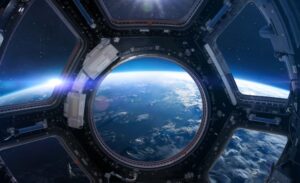12/10/2021
Last year I reported (here) on the first manned space flight from US soil since the end of the Space Shuttle program. This momentous feat was courtesy of Elon Musk’s SpaceX. A year on, and it seems like everyone’s at it, even William Shatner.
Back in July, beardy billionaire Richard Branson was on board “Unity 22” as part of Virgin Galactic’s first flight to the edge of space. A 90 minute trip which was 17 years in the making. Just 9 days later, Amazon founder Jeff Bezos was on board “New Shepard-16” for Blue Origin’s first space flight. Blue Origin’s second manned flight is set to include William Shatner, of Star Trek fame, and is due to blast off on 13 October 2021.
Having previously looked at the innovation that allowed Elon Musk to shoot for the stars, I thought I would dig into how Branson and Bezos are getting there.
Galactic Innovation
Unlike both Bezos and Musk, Branson took to the skies in a reusable winged ship “SpaceShipTwo” which itself was carried to 50,000 feet (~15 km) by the mighty, twin fuselaged, “WhiteKnightTwo”. Once the two craft separated, “SpaceShipTwo” turned its nose to the stars, fired up the rockets, and blasted to a ludicrous altitude of 282,337 feet (~86 km).
Curiously, despite being around for almost two decades, Virgin Galactic does not appear to have any patents in its own name. However, a little digging reveals that Virgin Galactic owns a firm called The Spaceship Company, which itself licences IP from Mojave Aerospace Ventures. Mojave owns a number of patents including national phases of WO 2004/092013 A2 directed to a “Winged Spacecraft”. Claim 1 specifically describes the pivotable wing system which allows the wings to move from a “normal aerofoil shape” to an “elevated position producing high drag for slowing the spacecraft during re-entry after spaceflight” and then back to the “normal aerofoil shape for a controlled generally horizontal runway landing”. This is shown in Figure 4 below.

Blue Original Ideas
William Shatner will take to space on board “New Shepard”, a reusable suborbital rocket system. The system includes a crew capsule which sits atop the “Blue Engine 3” rocket which will separate at around 100 km, allowing the capsule to float over the Kármán Line and into outer space. The rocket will land vertically, slowing to just 5 mph before doing so, while the crew will parachute down, Soyuz style, somewhere in the Texan plains.
Blue Origin appears as the proprietor on almost 100 patent publications, many published as recently as last year. US 8,876,059 B2 describes the use of “bidirectional fins” which allow a rocket to be controlled both when being flown “nose first” during take-off, and when being flown “tail first” during landing. The fins are shaped such that they provide a stabilizing effect and move the centre of pressure aft of the centre of mass of the rocket during ascent. During descent, the rocket thrusters do not operate so the fins then become the only means to control the direction of the rocket.
While Blue Origin’s rocket appeared to make a textbook vertical landing back in July, patent publications suggest the company plans to take things a step further. WO 2018/125942 A1 describes a quite incredible system in which a number of tensioned cables suspended from a large frame literally catch a rocket to slow its descent immediately before landing. The aim of this system is to make the rocket’s landing as gentle as possible so it may be reused a number of times without sustaining damage.

Innovation & Enterprise
This billionaire space race is about more than just a fun ride for the uber-wealthy; it is big business. The BBC reported (here) that following Richard Branson’s pioneering flight, Virgin Galactic began selling tickets on similar flights for $450,000 per person. In September, Virgin Galactic announced (here) its first commercial research contract with the Italian Air Force to “evaluate and measure the effects of the transitional phase from gravity to microgravity on the human body”.
In the meantime, Blue Origin is reportedly (here) offering seats for between $200,000 and $300,000 for a 10 minute flight. Earlier this year, Blue Origin was in the shortlist for a $2.9 billion contract to supply lunar landers as part of NASA’s Artemis program. The contract was ultimately awarded to rival mogul Elon Musk’s SpaceX. A much publicised lawsuit followed in which Blue Origin alleged a number of shortcomings at both NASA and SpaceX; we expect a ruling later this year. Despite this, Blue Origin is still in the running for a much smaller $26.5 million contract with NASA for more long term lunar work (as reported here).
However, the undisputed winner of the space race at the moment is Elon Musk. Not only is SpaceX being given the chance to take NASA astronauts to the Moon, it is also responsible for shipping supplies and astronauts to the International Space Station. In addition, SpaceX has valuable US defence contracts, and is developing a network of 4,425 satellites with the aim of providing internet access to most of the Earth’s surface. If they find the time, SpaceX also aims to dabble in a bit of space tourism too, but it’s well known that Elon’s long term aim is to send a manned flight to Mars. Watch this space.
Back on Earth, William Shatner is most likely making his final preparations in advance of his astronomical trip tomorrow. At 90, William will be the oldest person to go to space, and with his credentials, one wonders if they will let him fly the thing.
This article is for general information only. Its content is not a statement of the law on any subject and does not constitute advice. Please contact Reddie & Grose LLP for advice before taking any action in reliance on it.


